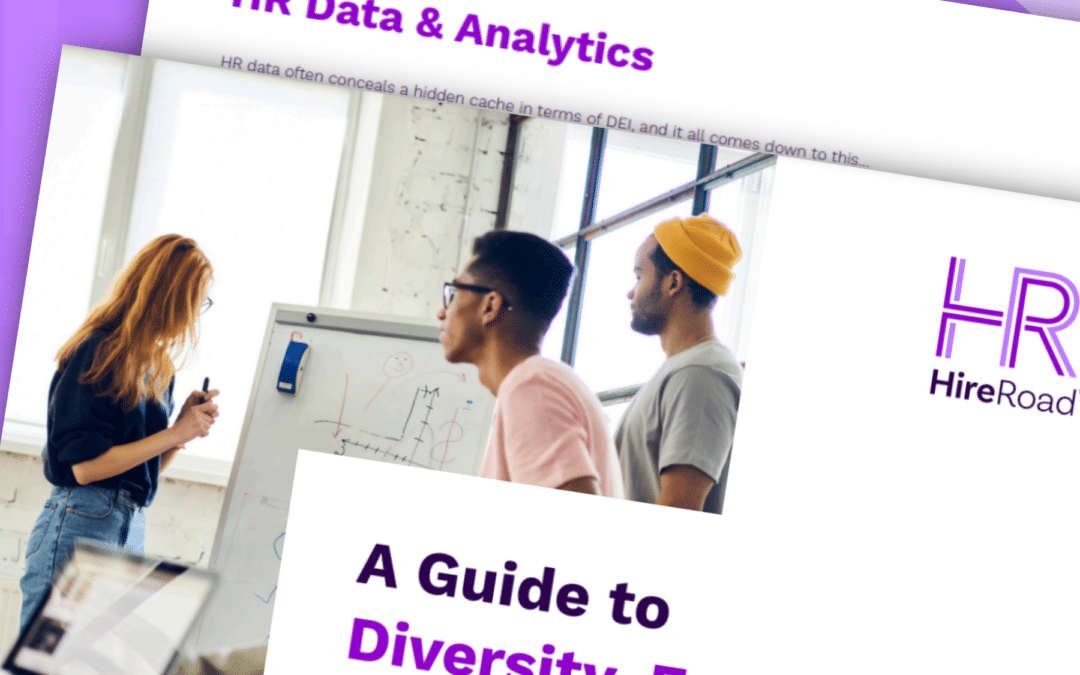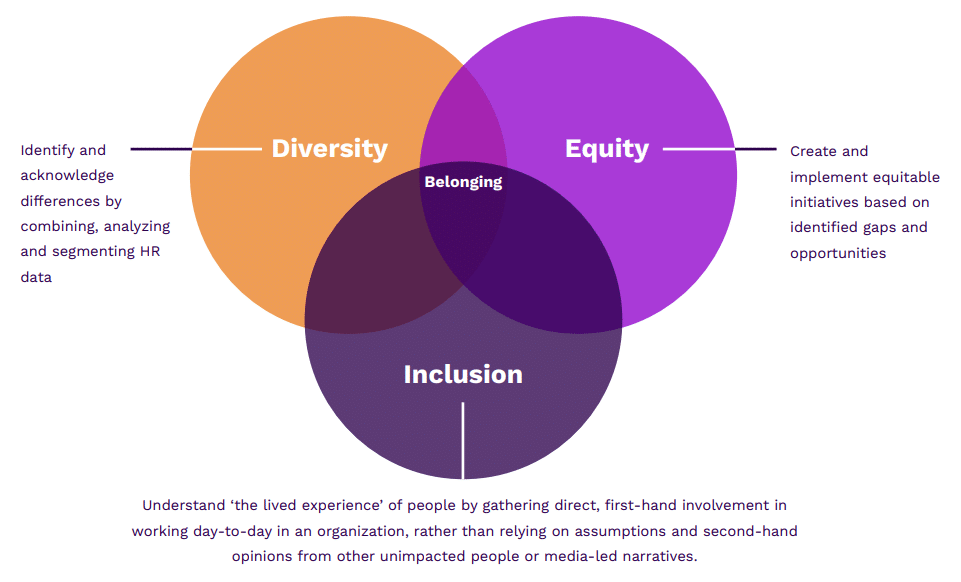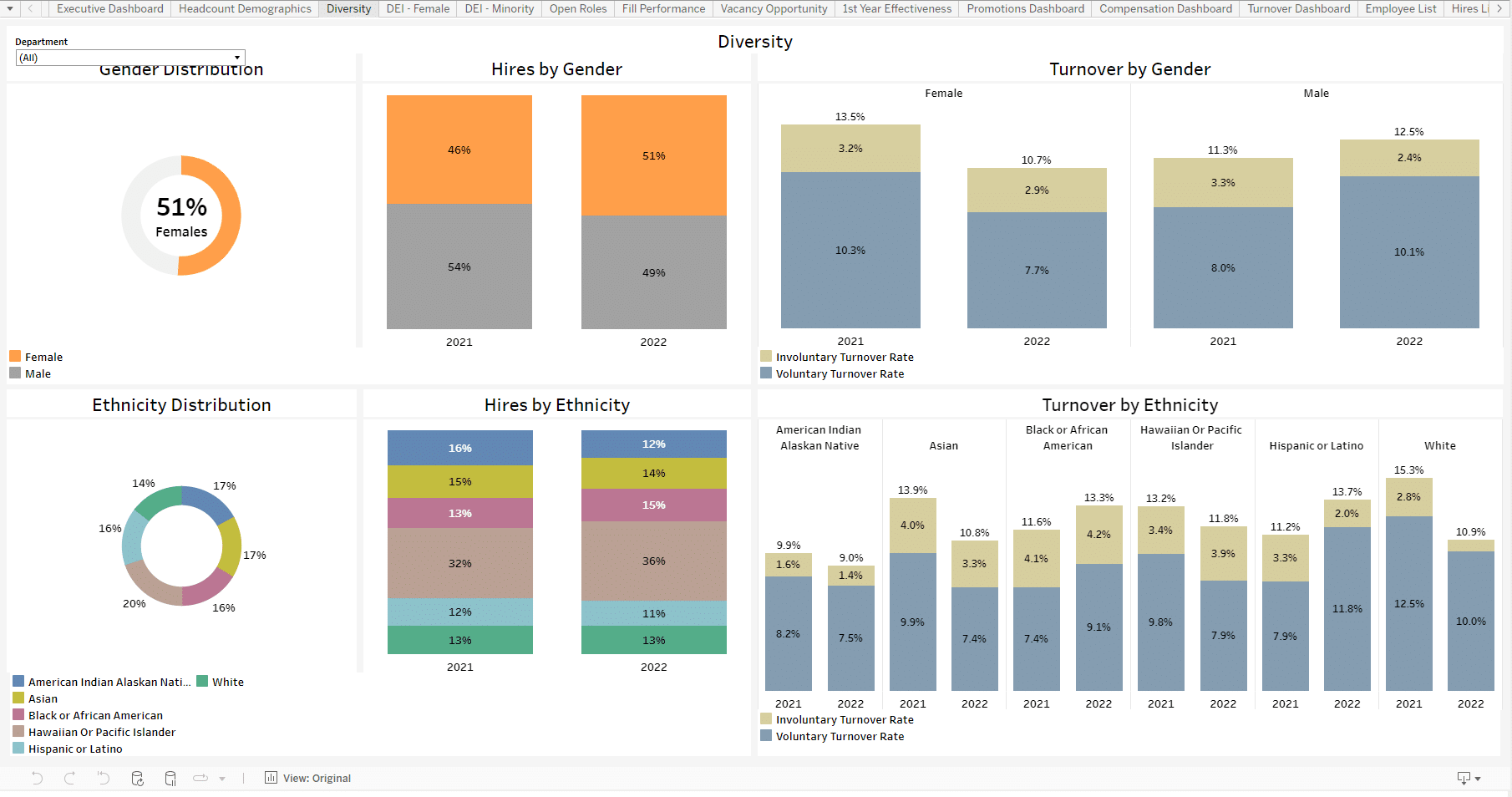Level up Your DEI Efforts
Welcome to “A Guide to Diversity, Equity and Inclusion,” where we provide you with an approach to understanding DEI, and explore how people analytics can improve the success of your DEI initiatives. Discover how to leverage HR data to identify opportunities for DEI programming and measure success against your DEI goals.
In this eBook, we’ll answer key questions and provide actionable insights on DEI, including:
- What exactly is DEI and how is it linked to overall business success
- How your HR data can measure the success of your DEI initiatives
- How to figure out if you’re attracting and recruiting a diverse range of talent
- How quickly accessing, manipulating, and analyzing HR data from disparate systems makes all the difference.
If you’re like many companies, then DEI initiatives have become much more important in the past years, and you might even have significant DEI goals to hit this year.
With our comprehensive guide, you’ll gain the expertise needed to accurately identify opportunities for DEI programs, and measure their success.
Diversity, Equity and Inclusion may mean something different for everyone—but the necessity to take DEI goals and initiatives seriously is the same for everyone. Get the guide and improve outcomes for your DEI efforts today!


Download the guide today!
Introduction to DEI
Diversity, Equity, and Inclusion (DEI) initiatives have taken center stage in organizations worldwide. They align with core values, boost performance, attract talent, represent society, foster employee engagement, and enhance employer branding. However, the effective implementation of DEI strategies requires a comprehensive understanding of HR data and analytics.
Diversity
Diversity in the workplace is about acknowledging the variety of employees, from visible differences like age, gender, ethnicity to less discernible ones like skills, socioeconomic status, experiences, and perspectives. To fully leverage diversity, it’s vital to unify data across these dimensions.
Equity
Equity ensures fairness for all employees, regardless of their diverse attributes. It involves identifying inconsistencies in areas such as learning and development opportunities, pay, promotions, and representation in decision-making roles. Achieving equity requires a thorough analysis of HR data to pinpoint gaps and discrepancies.
Inclusion
Inclusion celebrates the differences brought by diverse employees, creating a positive atmosphere where everyone feels valued and comfortable contributing. Inclusion focuses on individuals’ lived experiences, often gathered qualitatively through surveys and focus groups.
The Result = Belonging
Belonging flourishes at the intersection of diversity, equity, and inclusion. It promotes workplace well-being, increases staff buy-in, enhances external perceptions, and fosters a “we’re in this together” ethos.
HR Data & Analytics
Data plays a crucial role in understanding and advancing DEI initiatives. However, many organizations struggle to extract meaningful insights due to the scattered nature of their data. Unifying and analyzing HR data in a multi-dimensional way provides a comprehensive DEI overview.
Basic DEI Analytics
Basic analytics serve compliance and tracking purposes but often fall short in providing actionable insights. Aggregated data, such as candidate count by self-identified ethnicity or department demographics by age, ethnicity, or gender, can be time-consuming to combine and analyze. To develop a more dynamic DEI approach, organizations need to move beyond basic analytics.
Stepping Beyond Basics
To transcend the limitations of basic DEI analytics, organizations need to connect data across various dimensions. This granular approach identifies gaps, potential biases, and helps develop targeted strategies.
Case Study: Mattamy Homes
Mattamy Homes leveraged contemporary analytics software to expedite reporting, gain superior analytics, and identify areas of improvement. As a result, they identified high turnover rates among millennial female high-potential employees and developed a targeted program to address this issue.
What Next?
DEI is becoming increasingly important for organizations. By leveraging HR data and analytics in a multi-dimensional way and moving beyond basic analytics, organizations can gain a comprehensive understanding of their DEI landscape and drive meaningful change. In conclusion, DEI is not just an HR initiative; it’s a business strategy that can significantly impact an organization’s success.



